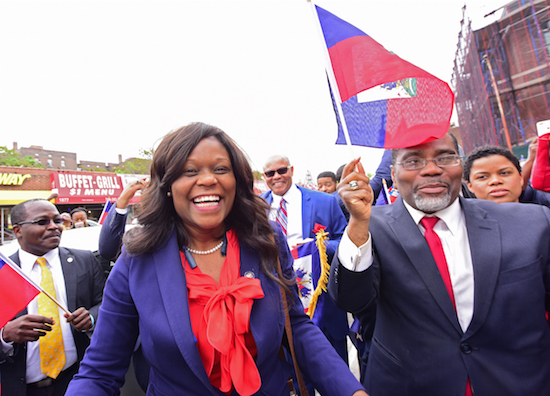First step in creating Little Haiti in Flatbush unveiled by New York’s first Haitian-American elected official

An exuberant Assemblymember Rodneyse Bichotte celebrates the intersection of Newkirk Street and Nostrand Avenue being renamed on Friday for Toussaint Louverture. Eagle photos by Andy Katz
Assemblymember Rodneyse Bichotte envisions creating a “Little Haiti” in Flatbush where, she says, Haitian Creole is by far the most prevalent foreign language spoken.
As a first step in the process, the intersection of Newkirk Street and Nostrand Avenue was renamed on Friday for Toussaint Louverture, credited as the inspiration for and leader of the Haitian Revolution, the first large-scale slave uprising since Spartacus’s revolt against Rome, 1,900 years prior.
